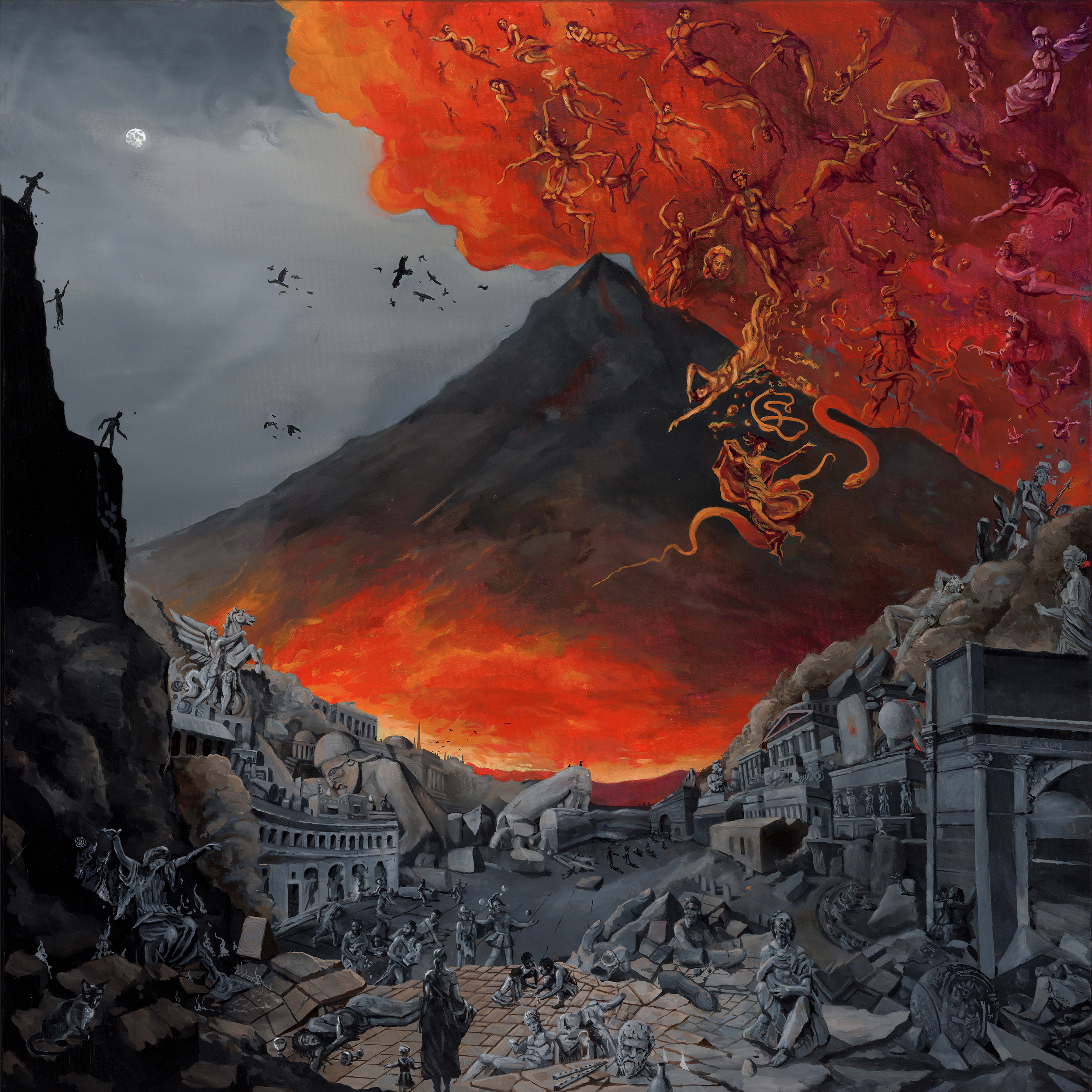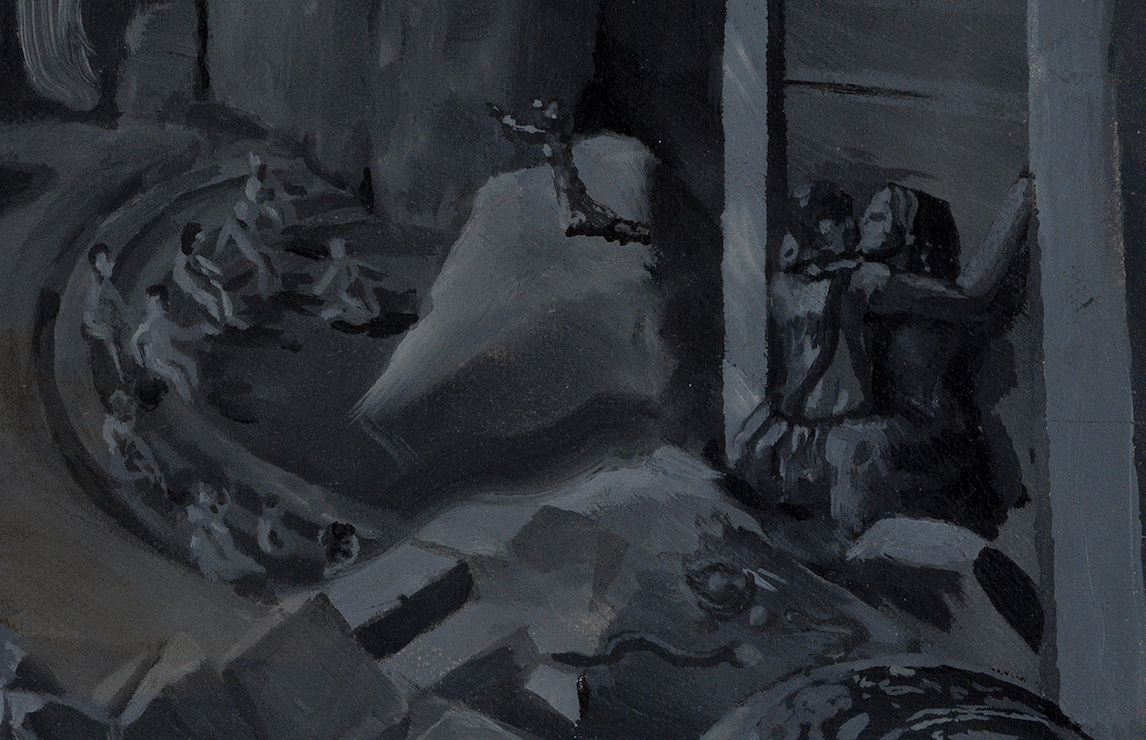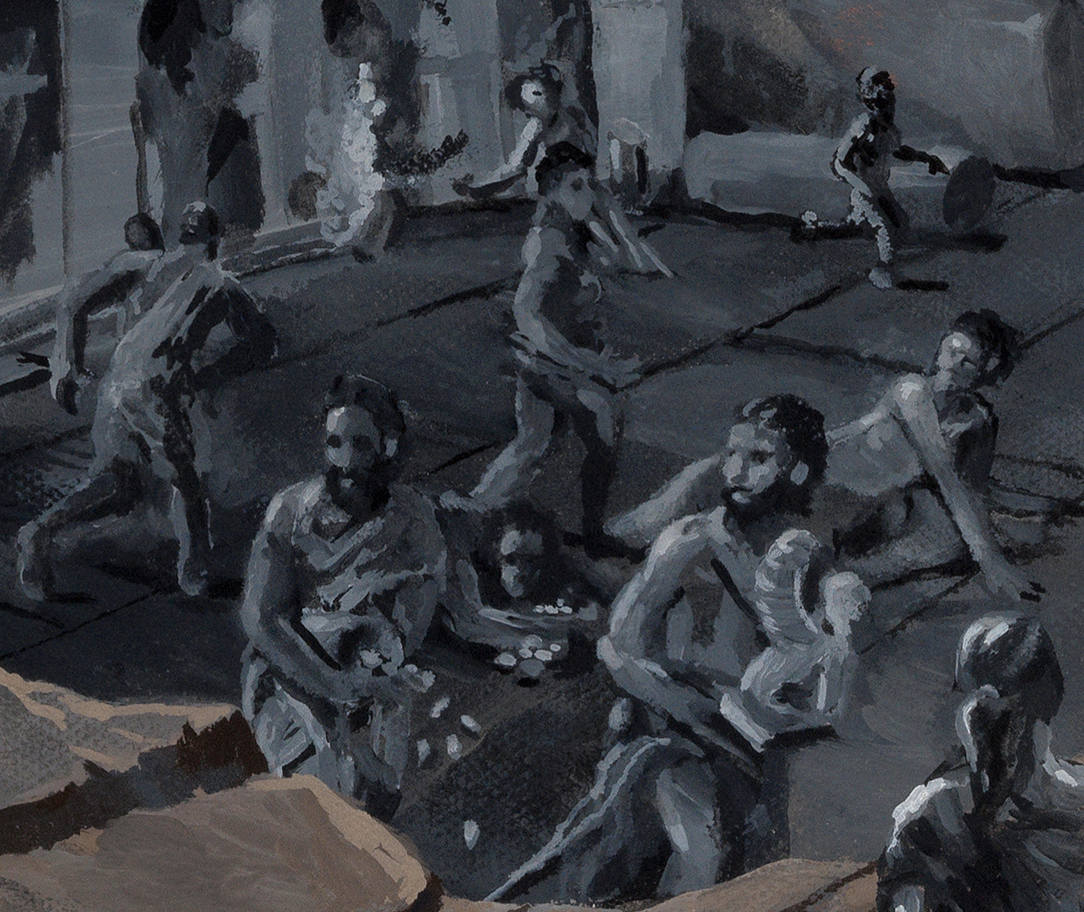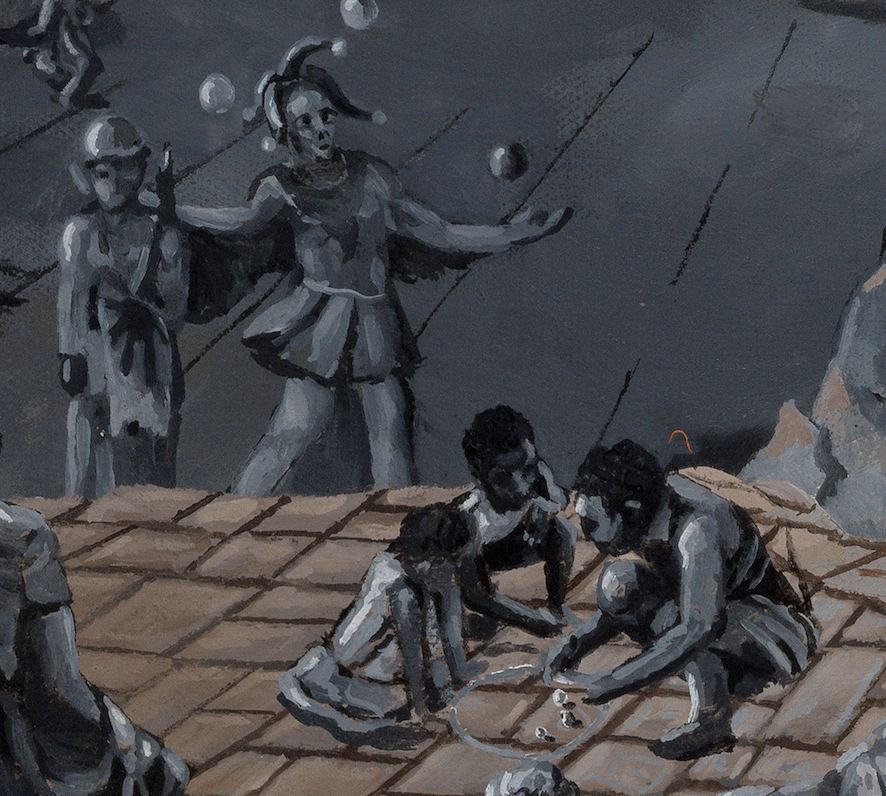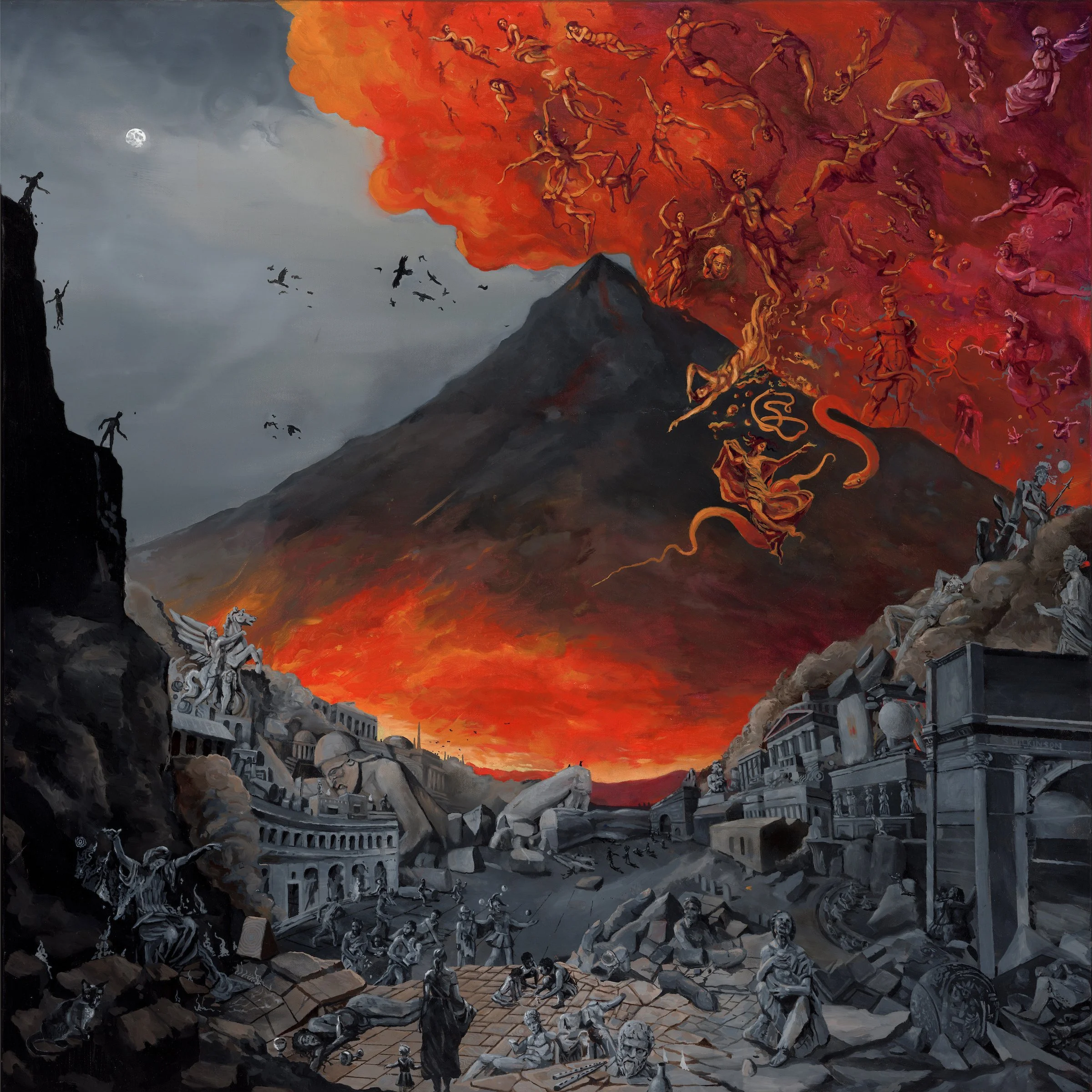This painting explores archetypes of humans facing impending destruction and their actions during the final moments of life. The following can be identified within the painting: two mother’s with their child (one confidently facing the destruction, and one shielding her infant from the impending blast); the suicides; the drunkards and unbothered (represented with the imagery of the Barberini Faun in a drunken stupor and the cyclops Polyphemus completely unconscious as if in the aftermath of his being tricked into a drunken state by Odysseus in the Odyssey); the lovers sharing their final kiss; the fearful scrambling for safety, the accepting embracing the fire; the looters clutching their artefacts of personal gain, the vindicated cultists listening to their last sermon before the accurately predicted demise of civilization; the fool juggling as if still denouncing the doom; the Delphic oracle inviting visions of the future; and the innocent and admirably naive children shooting marbles amidst the blaze.
Reactions to Catastrophe
36 in x 36 in, oil on canvas and black walnut frame, 2025.
This is an allegorical painting inspired by the human response to cataclysmic events. This is a fictitious landscape, and although greatly influenced by the eruption of Mt. Vesuvius and the devastation it caused at Pompeii, it includes imagery representative of Greek, Roman, Egyptian, and- with the inclusion of an Imperial soldier- even Japanese cultures. The latter is in reference to the bombing of Nagasaki and Hiroshima and echoes the theme of the timelessness of catastrophe.
To the right of the mountain’s peak and in the eruption, Typhon, the monstrous offspring of Gaia and Tartarus, beckons the inferno with his serpentine fingers, much like the depiction of the beast by the 17th-century Czech artist Wenceslaus Hollar. Toward his bottom-left floats his two-tailed venomous wife Echidna, which translates to “she-viper.” Echidna’s gaze, if followed, points to the figure of Romulus Augustus, the final emperor of the Western Roman Empire, which resonates the theme of destruction and signifies the end of an era.


